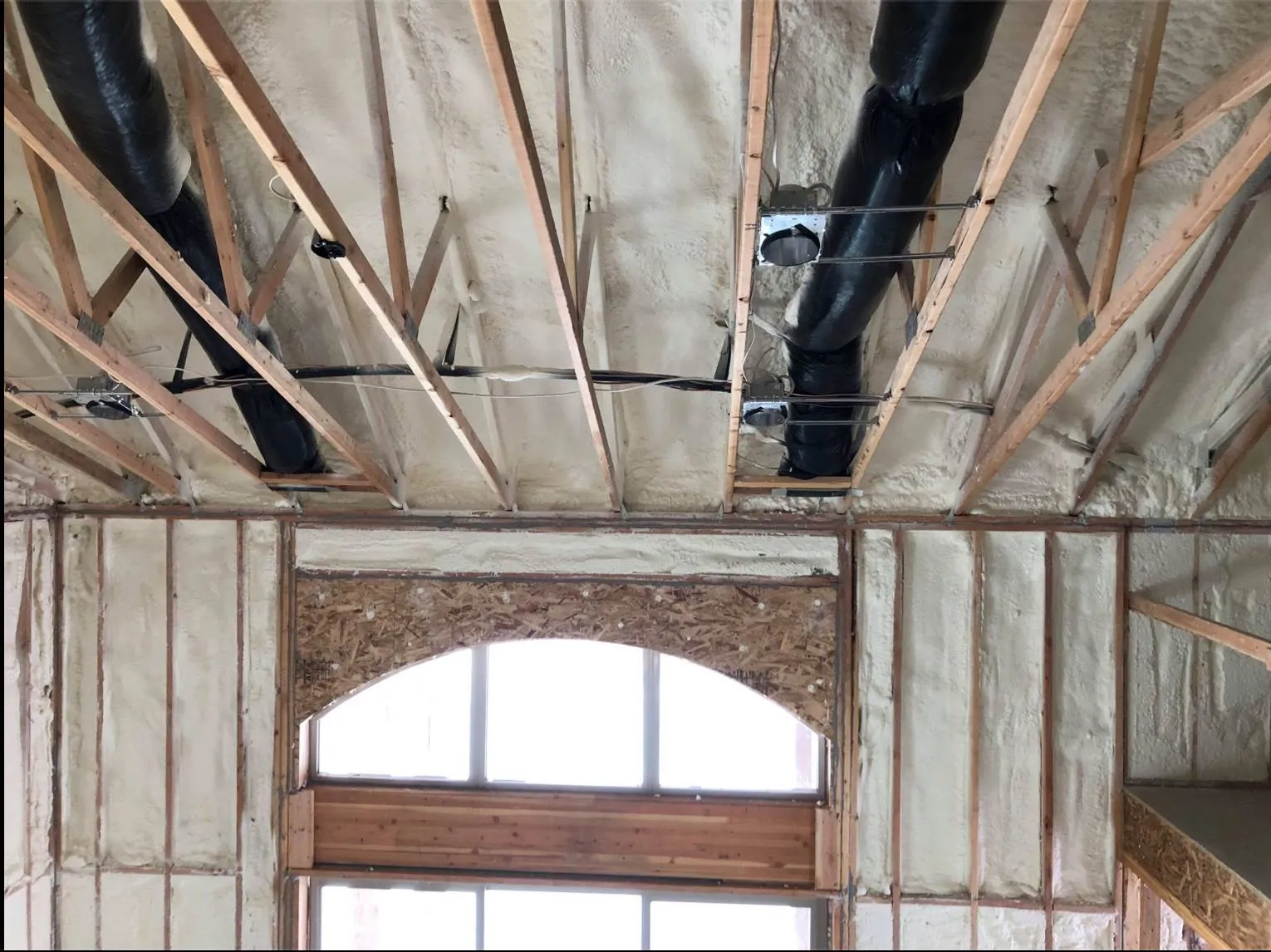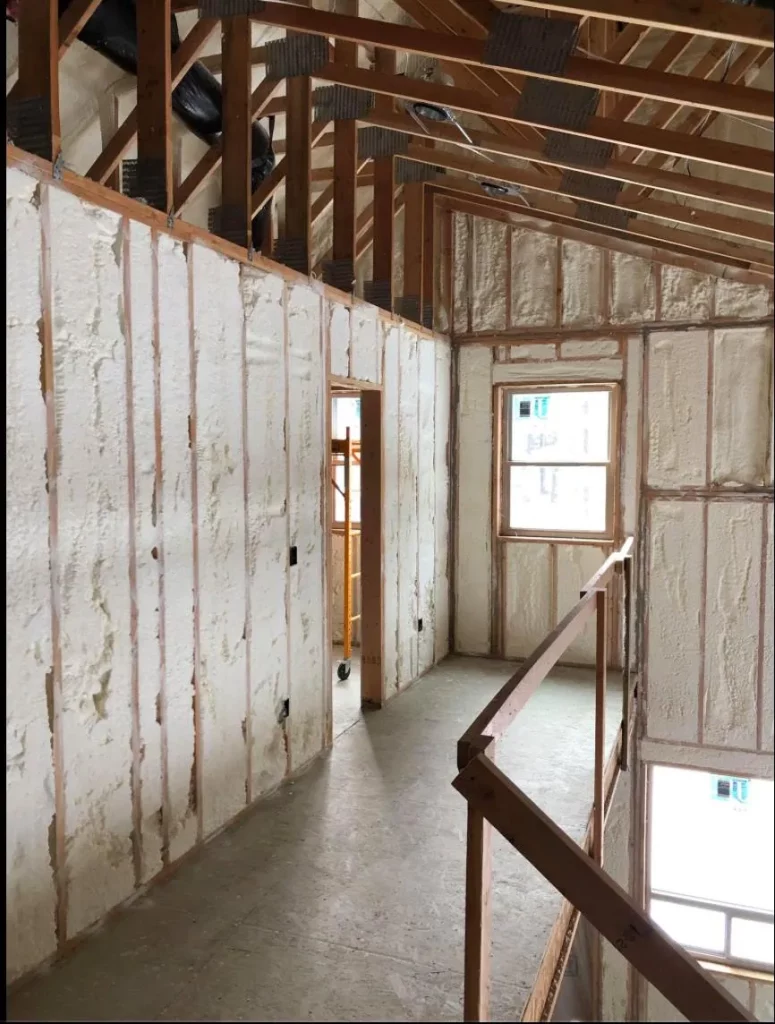
Proper insulation is the key to managing a building’s airflow, acting as a critical barrier that separates the conditioned indoor environment from the unconditioned outdoors. It works by creating an airtight seal that prevents uncontrolled air leakage, often called infiltration or exfiltration. This seal stops drafts, keeps conditioned air inside, and prevents outdoor air from seeping in through cracks and gaps in the building envelope. By controlling this air exchange, insulation allows a building’s heating, ventilation, and air conditioning (HVAC) system to manage airflow deliberately. This leads to a balanced, consistent indoor climate, improved energy efficiency, and a healthier living space free from outdoor pollutants and allergens.
Many people think of insulation only in terms of temperature control, but its role in managing air movement is just as important for occupant health and comfort. An improperly sealed home can lead to significant indoor air quality issues. According to the U.S. Environmental Protection Agency, concentrations of some pollutants are often two to five times higher indoors than outdoors. A well-insulated and air-sealed structure is the first line of defense against these contaminants. This article explains the direct connection between insulation, airflow, and a healthy indoor environment, backed by decades of professional experience in building science.
A building’s structure is full of tiny openings around windows, doors, electrical outlets, and plumbing penetrations. Without effective insulation and air sealing, these gaps become highways for air movement. This uncontrolled airflow creates several problems, from uncomfortable drafts to unpredictable temperature swings that force HVAC systems to work overtime.
Properly installed insulation, particularly materials that also function as an air barrier, directly addresses this issue. By filling these gaps and cavities, insulation stops the free flow of air. This process, known as air sealing, is fundamental to creating a balanced indoor environment. When the building envelope is sealed, the HVAC system can operate as designed, distributing conditioned air evenly and maintaining consistent pressure throughout the building. This prevents negative pressure zones that can pull in unfiltered outside air or even combustion gases from appliances.
An airtight building envelope achieved through quality insulation directly improves the efficiency and effectiveness of an HVAC system. When air leakage is minimized, the system doesn’t have to constantly compensate for conditioned air being lost or unconditioned air entering. This results in:
The connection between insulation, airflow, and health is direct. By sealing the building envelope, you are not just controlling temperature; you are creating a barrier against a host of outdoor contaminants that can compromise indoor air quality.
Uncontrolled airflow brings more than just outdoor temperatures into your home. It also carries dust, pollen, vehicle exhaust, and other pollutants. For individuals with allergies or respiratory conditions, this can be a serious health concern, as the American Lung Association points out that poor indoor air quality can trigger asthma attacks and other respiratory symptoms. Effective insulation and air sealing significantly reduce the amount of these airborne particles entering the living space, creating a cleaner, healthier environment.
Air leaks are also a primary source of moisture intrusion. When warm, moist air from outside meets cooler surfaces inside a wall cavity, condensation can occur. This moisture creates the perfect breeding ground for mold and mildew, which can cause serious health problems and structural damage. Insulation that acts as an air and vapor barrier, like closed-cell spray foam, is particularly effective at preventing this. It stops air movement and resists moisture transfer, keeping wall cavities dry and free of mold.
Bonus Tip: In climates with high humidity or extreme temperature swings, like parts of Nevada, pairing a quality insulation system with a mechanical ventilation system, such as a Heat Recovery Ventilator (HRV) or Energy Recovery Ventilator (ERV), provides the best of both worlds. It ensures a constant supply of fresh, filtered air while retaining the energy efficiency of a tightly sealed home.
Different insulation materials offer varying levels of air sealing. While all insulation provides some thermal resistance (R-value), not all types are effective at stopping air movement.
| Insulation Type | Air Sealing Capability | Primary Application | Key Consideration |
|---|---|---|---|
| Spray Foam (Closed-Cell) | Excellent | Wall cavities, attics, crawl spaces | Acts as an all-in-one air, vapor, and thermal barrier. |
| Spray Foam (Open-Cell) | Good | Wall cavities, sound dampening | Excellent air barrier but is vapor-permeable. |
| Fiberglass Batts | Poor | Wall cavities, attics | Requires a separate, meticulously installed air barrier to be effective. |
| Cellulose (Blown-in) | Fair | Attics, existing walls | Densely packed application reduces some airflow but is not a true air barrier. |
| Rigid Foam Boards | Good | Exterior sheathing, basements | Seams must be taped to create a continuous air barrier. |
Before investing in new or upgraded insulation, it’s important to assess your specific needs. A comprehensive approach will yield the best results for both airflow balance and energy efficiency.

R-value measures an insulation’s resistance to heat flow, not airflow. A material can have a high R-value but still allow air to pass through it easily (like fiberglass batts). For balanced airflow, you need a material that is both a good insulator and an effective air barrier.
Adding insulation to an attic is often a good idea for energy efficiency, but it may not solve airflow problems originating in the walls or foundation. Uncontrolled air movement is a whole-building issue. A comprehensive air sealing and insulation plan that addresses the entire building envelope is the most effective solution.
While insulation that seals air leaks can significantly reduce outdoor noise, its primary function is thermal and air control. Materials like open-cell spray foam or dense-pack cellulose offer excellent sound-dampening qualities, but no insulation can create a completely soundproof environment.
Signs of poor airflow control related to insulation include noticeable drafts, rooms that are difficult to heat or cool, high energy bills, issues with dust or allergens, and condensation on windows. These are all indicators that your building envelope may not be properly sealed.
Ultimately, proper insulation is about more than just staying warm or cool. It’s about creating a controlled, predictable, and healthy indoor environment. By establishing an effective air barrier, insulation stops the uncontrolled air leaks that undermine comfort, drive up energy costs, and introduce outdoor pollutants into your living space. The right insulation strategy allows your HVAC system to manage airflow efficiently, ensuring the air you breathe is clean, fresh, and healthy. Before making any changes, evaluate your building’s specific needs, consider your climate, and think about your long-term goals for comfort and health.
If you’re unsure about your building’s insulation performance or are experiencing issues with airflow and air quality, a professional evaluation can provide clear answers. For a detailed assessment and expert advice, contact Nevada Urethane. You can reach the team by calling (775) 397-2820 or sending an email to [email protected] to discuss your project.